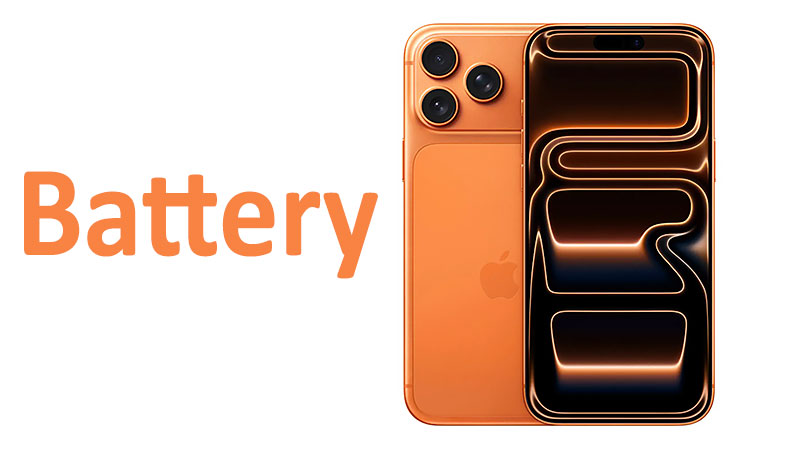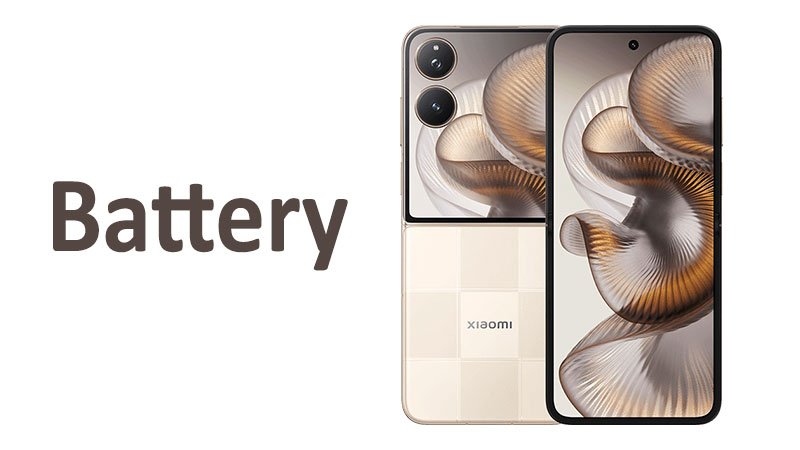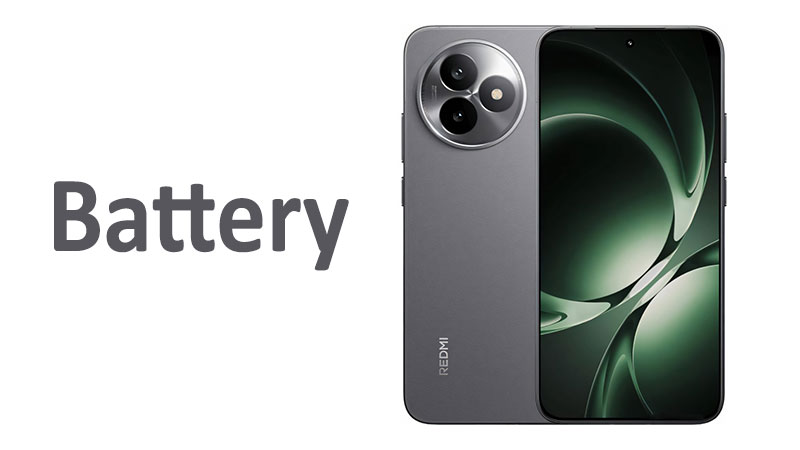The Apple iPhone 17 Pro Max Battery system is a landmark feature for this new generation. Its performance directly affects daily user experience. Understanding its capacity, charging capabilities, and overall life is crucial. This article provides a comprehensive and detailed analysis. We will cover every aspect of the new power management system. Consumers need to know exactly what they are buying. This deep dive will offer all the necessary information.
Battery Capacity: A Tale of Two Models
The iPhone 17 Pro Max battery capacity is not a single number this year. Apple introduced a crucial distinction based on the SIM configuration. This design choice has significant implications for iPhone 17 Pro Max battery life.
The Dual Capacity Strategy
Apple offers two distinct battery capacities for the Pro Max model. These capacities depend on the inclusion of the physical Nano SIM tray. The physical SIM tray occupies valuable internal space. Removing it allows for a larger battery cell.
The Nano SIM model includes a Li-Ion 4832 mAh battery. This is a robust capacity for a flagship device. It maintains a balance between component space and power.
The eSIM-only model, however, boasts a larger Li-Ion 5088 mAh battery. This is a substantial 256 mAh increase. It translates directly into longer screen-on time. This difference is significant for power users. It rewards early adopters of the eSIM standard.
Specialized Comparison: Capacity Gains
Compared to its predecessor, the iPhone 16 Pro Max, these capacities represent meaningful gains. Previous generations saw minor increases. The 5088 mAh option marks a substantial jump into the ultra-premium power segment. This puts the iPhone 17 Pro Max battery capacity ahead of many competitors. Some Android competitors offer larger raw capacities. However, Apple’s efficiency, due to hardware and software synergy, often translates into superior real-world battery life. This synergy is key to Apple’s power success.
Pros and Cons of the Dual Capacity
Pros:
- Choice: Consumers can choose between physical SIM flexibility and maximum battery life.
- eSIM Incentive: The 5088 mAh version heavily incentivizes the adoption of the efficient eSIM technology.
- Overall Improvement: Even the 4832 mAh model is a significant improvement over the prior generation’s standard capacity.
Cons:
- Model Confusion: The existence of two capacity figures can be confusing for buyers.
- Capacity Gap: The 256 mAh difference is notable for users who still require a Nano SIM slot.
- Regional Variation: Not all global markets fully support eSIM technology yet.
Important Points for Buyers
A buyer must first determine their SIM needs. If you travel frequently, a physical SIM may be necessary. If you rely solely on your carrier’s eSIM service, choose the 5088 mAh version. That model offers the maximum possible iPhone 17 Pro Max battery life. The extra capacity is ideal for intensive tasks like 4K video recording or extended gaming sessions. Always check regional availability of the eSIM-only variant.
High-Speed Wired Charging Technology
The speed at which a device can recharge is as critical as its overall capacity. The iPhone 17 Pro Max charging system introduces impressive wired capabilities. This drastically reduces downtime for the user. Fast wired charging addresses a major pain point for previous iPhone users.
PD2.0 and Time-to-Charge
The iPhone 17 Pro Max supports Power Delivery 2.0 (PD2.0). This is a well-established and highly efficient charging protocol. Apple claims a speed of 50% charge in just 20 minutes. This is a stellar performance metric. It is competitive with the fastest charging technologies available today.
Achieving this speed requires a high-wattage USB-C power adapter. Apple often sells this adapter separately. This strategy allows users to choose their charger. However, it adds a potential extra cost for maximizing charging speed. PD2.0 ensures safe and regulated power delivery. It protects the battery cell from damage.
Specialized Comparison: Wired Charging
The 50% in 20 minutes metric is faster than the iPhone 16 Pro Max. The older model typically required 30 to 35 minutes for the same percentage. This 10-15 minute saving is invaluable in a rush. Competitors in the Android space may offer higher peak wattage. However, Apple prioritizes sustained, efficient charging. They focus on maintaining the battery’s health over its lifetime. Apple’s system uses advanced thermal management. This prevents overheating during high-speed charging cycles. The controlled approach ensures greater long-term battery durability.
Pros and Cons of Wired Charging
Pros:
- Extreme Speed: Achieving 50% charge in only 20 minutes provides exceptional convenience.
- Reliability: Wired connections are always the most reliable for consistent power transfer.
- Thermal Control: Integrated PD2.0 protocols and hardware ensure safe, cool charging.
Cons:
- Separate Adapter: The high-wattage adapter is often sold separately, increasing the total investment.
- Cable Dependency: Users must carry the correct USB-C cable for optimal speed.
- Not the Fastest: Some competitors have hit 100W+ charging speeds, although often with higher heat generation.
Important Points for Buyers
To realize the full iPhone 17 Pro Max fast charging capability, buy a high-quality, high-wattage PD2.0 certified charger. Look for chargers rated 45W or higher. This guarantees enough power output for the phone. Using a low-wattage charger will still work. However, it will drastically increase the charging time. Always use certified cables and accessories. This ensures both safety and maximum speed.
Wireless Charging: The 25W MagSafe/Qi2 Evolution
Wireless charging provides unmatched convenience. The iPhone 17 Pro Max wireless charging speed sees a significant boost. It now supports a higher wattage and utilizes a new standard.
The 25W MagSafe and Qi2 Standard
The iPhone 17 Pro Max supports 25W wireless MagSafe/Qi2 charging. This is a major upgrade for wireless power delivery. The previous generation typically topped out at 15W. This new speed cuts wireless charging time significantly.
Apple claims 50% charge in 30 minutes using the 25W wireless protocol. This makes wireless charging a viable rapid charging option. Qi2 is an open standard that incorporates magnetic alignment. MagSafe accessories utilize this magnetic alignment. This ensures perfect coil-to-coil contact every time. Perfect alignment minimizes energy loss and maximizes efficiency. It also prevents the phone from accidentally slipping off the charging pad.
Specialized Comparison: Wireless Charging
The 25W wireless speed is incredibly competitive. It brings the wireless charging experience much closer to wired speeds. For comparison, the 15W MagSafe standard of the previous generation took closer to 60 minutes for 50%. Cutting this time in half is a huge benefit. Qi2 compatibility is also crucial. It opens the door for a wider ecosystem of high-speed, magnetically aligned chargers. This is a significant advantage over proprietary wireless charging standards.
Regional Limitation: 15W in China
There is an important regional limitation to note. The iPhone 17 Pro Max wireless charging is capped at 15W in China. This limitation is due to specific governmental regulations. These regulations govern power transmission and wireless frequencies. Consumers in China must be aware of this reduced speed. The 15W cap means the 50% charge will take longer than 30 minutes in that specific market. This regulatory distinction highlights the complexities of global product launches.
Pros and Cons of Wireless Charging
Pros:
- High Speed: 25W is a breakthrough speed for wireless charging, offering rapid power without cables.
- Qi2/MagSafe Alignment: The magnetic connection ensures optimal charging efficiency and convenience.
- Standardization: Qi2 compatibility means more third-party accessories can offer full-speed charging.
Cons:
- Heat Generation: Higher wattage wireless charging can still generate more heat than wired charging.
- Regional Cap: The 15W cap in China restricts performance in a major global market.
- Accessory Cost: Dedicated 25W MagSafe or Qi2 pads may be expensive initially.
Important Points for Buyers
Prioritize certified Qi2 accessories to ensure 25W charging speed. Using older or non-certified Qi pads will result in slower 7.5W speeds. This is a considerable downgrade. The magnetic alignment should feel satisfying and secure. If you purchase the phone in China, prepare for the 15W limit. This difference is fixed and cannot be changed by using a different charger. Wireless charging offers excellent convenience at your desk or bedside.
Reverse Wired Charging: Sharing the Power
A modern flagship device must not only receive power but also share it. The iPhone 17 Pro Max introduces limited reverse charging capabilities. This feature enhances its utility as a central power hub.
4.5W Reverse Wired Utility
The iPhone 17 Pro Max supports 4.5W reverse wired charging. This means the phone can output power to another device. It uses a wired connection, typically the USB-C port. The 4.5W output is not designed for charging another phone quickly. It is perfect for small accessories.
The primary use case is charging Apple Watch or AirPods. These small devices have tiny batteries. A 4.5W output is more than enough to top them up. This eliminates the need for separate charging bricks for these accessories. It turns the iPhone into a portable power bank for its own ecosystem.
Wired vs. Wireless Reverse Charging
Many competitors offer wireless reverse charging. Apple chose a wired solution for the iPhone 17 Pro Max. This decision is likely based on efficiency and heat management. Wireless reverse charging can be inefficient. It creates substantial heat. A wired connection guarantees power transfer with minimal energy loss. Furthermore, the 4.5W limit keeps the heat low. This preserves the internal Li-Ion battery health. The wired approach is a pragmatic choice for the ecosystem.
Practical Scenarios for Use
Imagine being away from a wall outlet. Your AirPods case is dead. You can simply connect the iPhone to the AirPods case using a USB-C to Lightning or USB-C to USB-C cable. The 4.5W output quickly revitalizes the small accessory battery. This is a crucial feature for Apple’s loyal users. It consolidates accessories and simplifies travel. This small feature adds significant value to the overall power management suite.
Battery Longevity and Software Optimization
The iPhone 17 Pro Max battery life is determined by more than just raw capacity. Apple’s software optimizations and internal components play a huge role. The A-series chipset is designed for extreme power efficiency. This efficiency maximizes every milliamp-hour.
The Role of the A-Series Chipset
The A-series processor within the iPhone 17 Pro Max is incredibly efficient. Its architecture manages background processes intelligently. It only draws power when necessary. This fine-tuned power management extends battery life beyond the capacity suggests. It is the secret to Apple’s superior real-world endurance.
The software, likely iOS 18 or 19, works hand-in-hand with this chip. It uses machine learning to predict usage patterns. The operating system adjusts power draw dynamically. This means the phone performs optimally while saving power.
Battery Health Management
Apple continues its commitment to long-term battery health. The iPhone 17 Pro Max features advanced battery health management. This system learns your daily charging routine. It slows charging down when it reaches 80%. It holds the charge at 80% until just before you need it. This reduces the time the battery spends at a high state of charge. Holding a high charge for too long can degrade the Li-Ion cell rapidly. This feature extends the chemical life of the battery.
Tips for Maximizing Battery Lifespan
Users can take proactive steps to maximize their battery lifespan. Avoid extreme temperatures. Heat and cold are enemies of the Li-Ion battery. Use the optimized charging features in the settings. Try to maintain a charge between 20% and 80% for daily use. Only charge to 100% when you know you will need the full capacity. These small habits significantly extend the overall life of the iPhone 17 Pro Max battery.
Pros, Cons, and Buyer’s Final Checklist
The overall battery package for the iPhone 17 Pro Max is complex. It offers a multitude of high-end features. Potential buyers should weigh the specialized pros and cons carefully.
Comprehensive Pros and Cons
Pros:
- High Capacity: The 5088 mAh eSIM model is a substantial power boost.
- Blazing Wired Speed: 50% charge in 20 minutes is a best-in-class recovery time.
- Advanced Wireless: 25W Qi2/MagSafe is highly convenient and fast.
- Ecosystem Utility: Reverse wired charging offers useful power sharing for accessories.
- Software Efficiency: The chipset and iOS provide exceptional real-world longevity.
- Better Health: Smart charging protocols extend the long-term chemical life of the cell.
Cons:
- Dual Capacity: Having two different battery sizes creates consumer confusion and inequality.
- Adapter Not Included: The separate purchase of a fast charger adds to the final cost.
- Regional Cap: The 15W wireless limit in China is a major drawback for that market.
- No Wireless Reverse: Lack of wireless reverse charging may disappoint some users.
- Cost: All these advanced power features contribute to a premium flagship price tag.
Important Points a Buyer Should Know
The choice between the Nano SIM and eSIM models is pivotal. This choice dictates the maximum battery capacity you will receive. Invest in the certified 45W+ PD2.0 charger to fully utilize the wired speed. Do not rely on old, slow 5W chargers. The iPhone 17 Pro Max charging time depends entirely on your accessory choice. Understand the 25W wireless charging needs a new generation of MagSafe/Qi2 pads. Old 15W pads will perform slower. The 4.5W reverse charging is a handy feature. Use it to consolidate your charging accessories when you travel. Focus on maintaining good charging habits for a multi-year lifespan.
Conclusion
The Apple iPhone 17 Pro Max battery represents a significant leap forward. It combines raw capacity with aggressive charging speeds. The 5088 mAh eSIM model sets a new standard for longevity. The 50% in 20 minutes wired charging capability is a game-changer. Furthermore, the 25W wireless speed is highly competitive.
The power system is designed for the modern, constantly connected user. It maximizes efficiency through software and hardware integration. While the dual-capacity strategy is complex, it rewards eSIM adoption. The inclusion of 4.5W reverse wired charging adds tangible utility.
The iPhone 17 Pro Max offers a best-in-class power experience. Consumers must invest in the right charging accessories to unlock its full potential. This phone is an excellent choice for anyone prioritizing fast charging and long-lasting battery life. It stands ready to power the next generation of mobile computing. The iPhone 17 Pro Max battery will redefine user expectations.
FAQ
What is the capacity of the iPhone 17 Pro Max battery?
The capacity depends on the model. The Nano SIM model has 4832 mAh. The eSIM-only model features a larger 5088 mAh battery.
How fast is the wired charging on the iPhone 17 Pro Max?
It supports PD2.0 wired charging. This allows the phone to reach 50% charge in just 20 minutes. You need a compatible high-wattage USB-C charger.
Does the iPhone 17 Pro Max support MagSafe charging?
Yes, it supports the latest MagSafe/Qi2 standard. It offers fast wireless charging at speeds up to 25W. This can achieve 50% charge in only 30 minutes.
Is the wireless charging speed the same globally?
No, it is not. Wireless charging is capped at 15W in the Chinese market due to specific local regulations. It maintains 25W in most other regions.
Can the iPhone 17 Pro Max charge other devices?
Yes, it features 4.5W reverse wired charging. This allows the phone to charge small accessories. These accessories include AirPods or an Apple Watch, using a USB-C cable.



